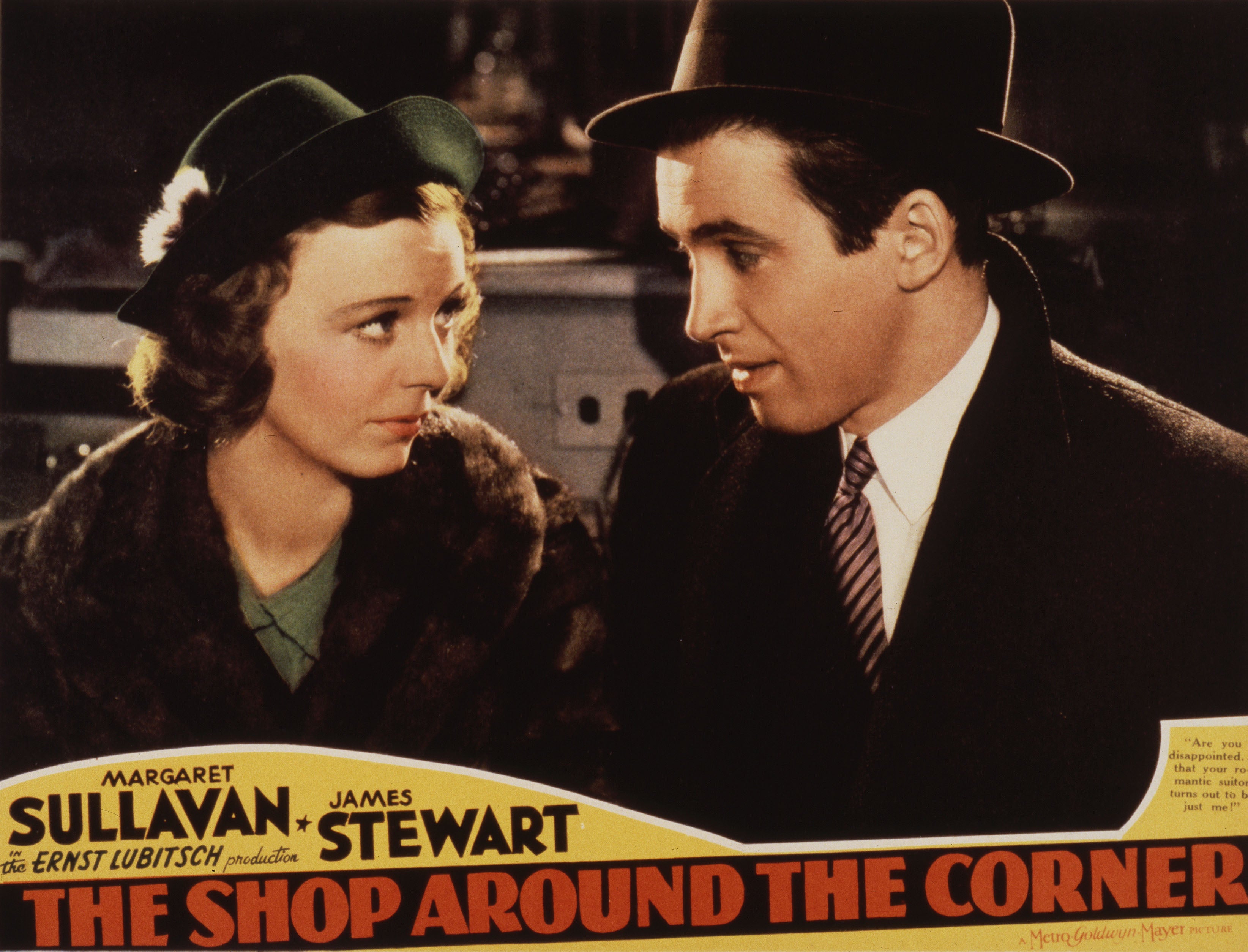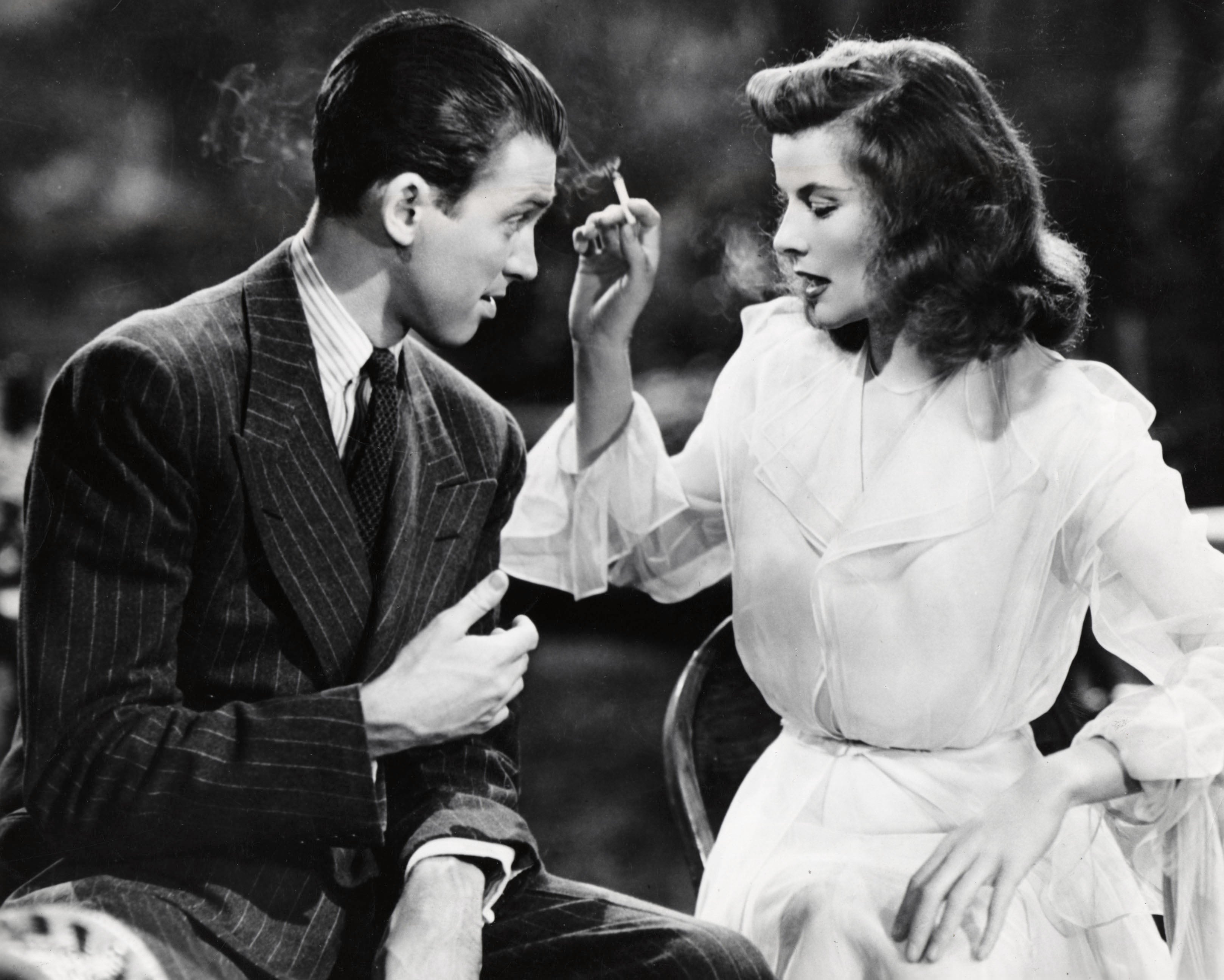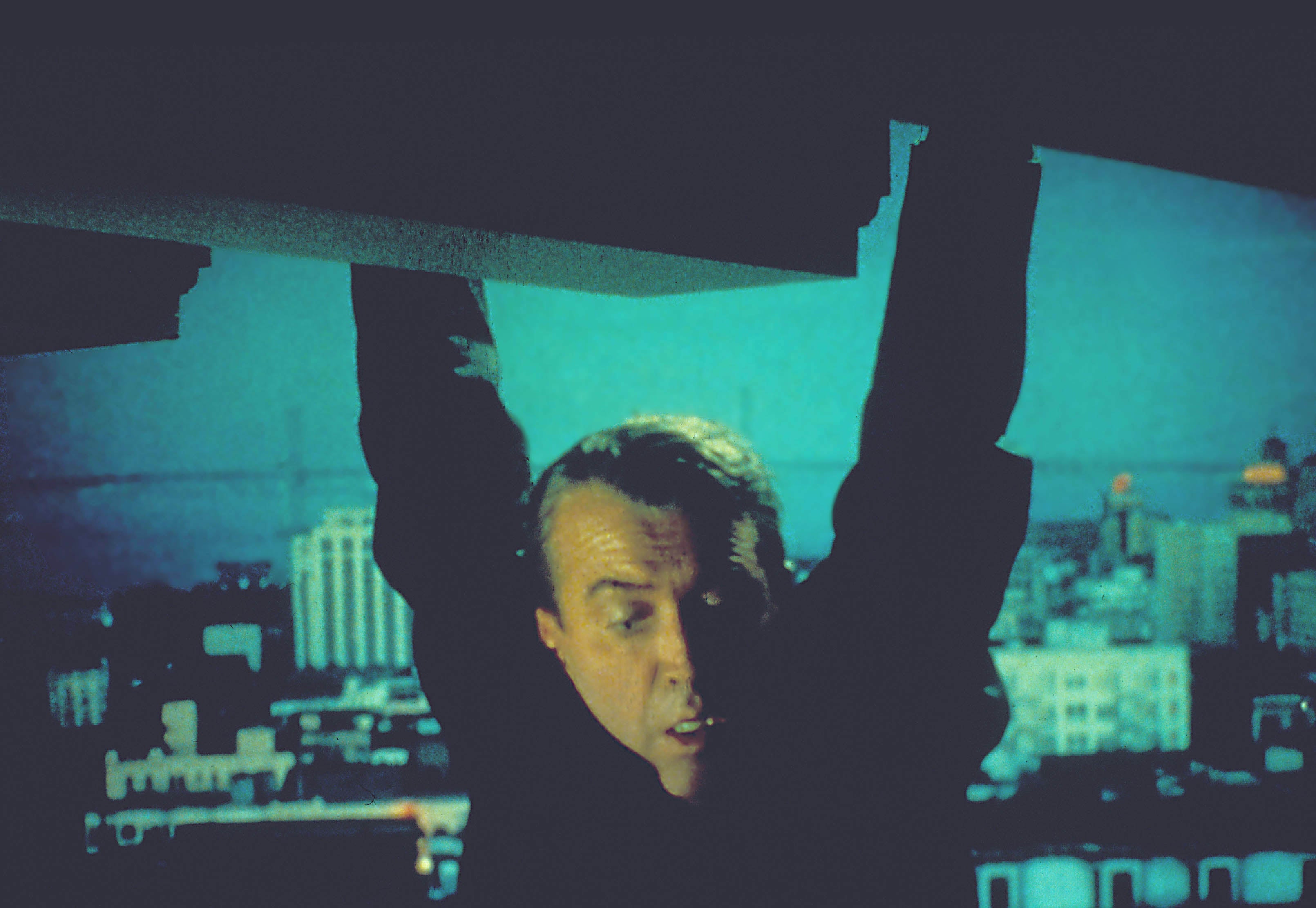James Stewart’s 10 greatest performances, from It’s a Wonderful Life to Vertigo
The adored screen star was seen as the idealistic American everyman, but he also excelled in more sinister roles. To mark the anniversary of Stewart winning his one and only Oscar, Graeme Ross counts down 10 of his most iconic performances

Exactly 80 years ago on Saturday, just days before he enlisted in the US army air corps, James Stewart picked up his Academy Award for Best Actor statuette for his performance as the cynical journalist in The Philadelphia Story. He wouldn’t make another film until after the war – the first being arguably his most famous, It’s a Wonderful Life. With his inimitable drawl and gangly walk, and exuding common sense and decency, Stewart’s pre-war image was that of the idealistic American everyman. However, he returned from the conflict a changed person. He had decided that a tougher edge was required and he moved with great success into darker roles with directors including Alfred Hitchcock and Anthony Mann. This countdown of his 10 greatest performances from six decades in the movie business demonstrates that Stewart was not just one of cinema’s greatest stars but also one of its most versatile.
10. Charlie Anderson in Shenandoah (1965)
Permanently chomping on a cigar butt, Stewart is the whole show as the grizzled patriarch implacably indifferent to the American Civil War. When his family is torn apart by the conflict, Anderson is forced to re-evaluate his view. This undeniably sentimental film is actually fairly hard-hitting, with vague allusions to the Vietnam War. Eyebrows will be raised at Shenandoah’s inclusion in this list at the expense of The Man Who Shot Liberty Valance, but it deserves its place as Stewart’s last great performance.
9. Alfred Kralik in The Shop Around the Corner (1940)

This sublime romantic comedy set in Budapest sees Stewart displaying great chemistry opposite the woman he once loved in real life, Margaret Sullavan. The pair play two prissy, bickering lonely-heart shop assistants who fall in love by post without guessing each other’s identity. Stewart’s verbal sparring with Sullavan is a joy in this marvellous example of the celebrated Ernst Lubitsch touch.
8. Paul Biegler in Anatomy of a Murder (1959)
Stewart snagged his fifth and final Oscar nomination for his rollicking turn as the wily, small-town lawyer defending a soldier on trial over the killing of the man who allegedly raped his wife. With its sexual themes and frank use of adult language, this riveting courtroom drama was very daring for its time. Both the film and Stewart’s performance perfectly bookended a decade in which the actor fearlessly chose roles at odds with his wholesome persona.
7. Elwood P Dowd in Harvey (1950)
Stewart reprised his stage role as amiable boozer Elwood P Dowd, whose best friend, much to the mortification of his family, is a 6ft 3in invisible rabbit. This is one of the roles most associated with Stewart and was one of his own personal favourites. His delightful portrayal of benign yet somehow profound innocence in this warm and witty film was nominated for the Best Actor Oscar.
6. Howard Kemp in The Naked Spur (1953)
A marvellous run of five gritty westerns with Anthony Mann in the first half of the 1950s toughened up Stewart’s image, establishing him as a bona fide legend of the genre. In The Naked Spur, Stewart gave a startlingly intense performance as the bounty hunter whose rage-fuelled neuroses reach such levels of psychotic hysteria that Clint Eastwood noted, “Stewart had a great way with violence. When he snapped, his danger came on strong.”
5. Macaulay Connor in The Philadelphia Story(1940)

That the performance for which Stewart won his only Oscar should be ranked just fifth on this list is testimony to the quality of numbers one to four. Really, Stewart’s friend Henry Fonda should have taken home the award that year for The Grapes of Wrath, but that doesn’t detract from Stewart’s performance. He was in no way overshadowed by Katharine Hepburn and Cary Grant, and was perfect as the cynical, fast-talking reporter underwhelmed by the vapid airs and graces of high society.
4. LB Jefferies in Rear Window (1954)
Hitchcock’s masterclass in audience manipulation features Stewart as an obsessed voyeur with a broken leg who is confined to his apartment and who suspects his neighbour of murder. The restricted setting brought out Stewart’s genius as an actor, particularly when his character’s girlfriend, played by Grace Kelly, is in mortal danger in the murderer’s apartment. All Stewart can do is watch impotently, his mounting hysteria a conduit for the audience’s own fear and anxiety.
3. Jefferson Smith in Mister Smith Goes to Washington (1939)
This American classic boasts the quintessential Stewart pre-war performance and established his enduring persona as a man of integrity and grit. He lost the Oscar vote to Robert Donat, but as the idealistic, incorruptible senator given a rude awakening by the machinations and corruption of American politics, Stewart is simply sensational. The filibuster scene in the senate long ago entered the annals of great movie memories, with Stewart using mercury chloride on his throat to achieve the distinctive rasp in his voice.
2. George Bailey in It’s a Wonderful Life (1946)
It’s a Wonderful Life is loved for a variety of reasons, but mostly for an unforgettable performance by Stewart. None of the actor’s films demonstrate his unerring ability to convey a full range of emotions quite like this one. In the course of the film, Stewart embodies love, joy, and sacrifice, but most significantly for his future direction as an actor, there is also despair, sorrow and anger. The idealism of young Mr Smith is still very much in evidence, but there’s also a dark undercurrent to George Bailey – one fully exploited later by Hitchcock and Mann.
1. John “Scottie” Ferguson in Vertigo (1958)

Stewart’s role as the obsessive fetishist haunted by his past is so dark and complex that it still comes as a surprise that he was willing to subvert his nice-guy image so dramatically. Hitchcock was never particularly an actors’ director, so Stewart’s almost unhinged interpretation of the role was very much his own invention. The darker themes of It’s a Wonderful Life, the flawed anti-heroes of the Mann westerns, the voyeur of Rear Window – all these roles led to Vertigo, Stewart’s greatest performance.



Join our commenting forum
Join thought-provoking conversations, follow other Independent readers and see their replies
Comments